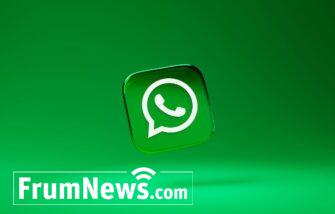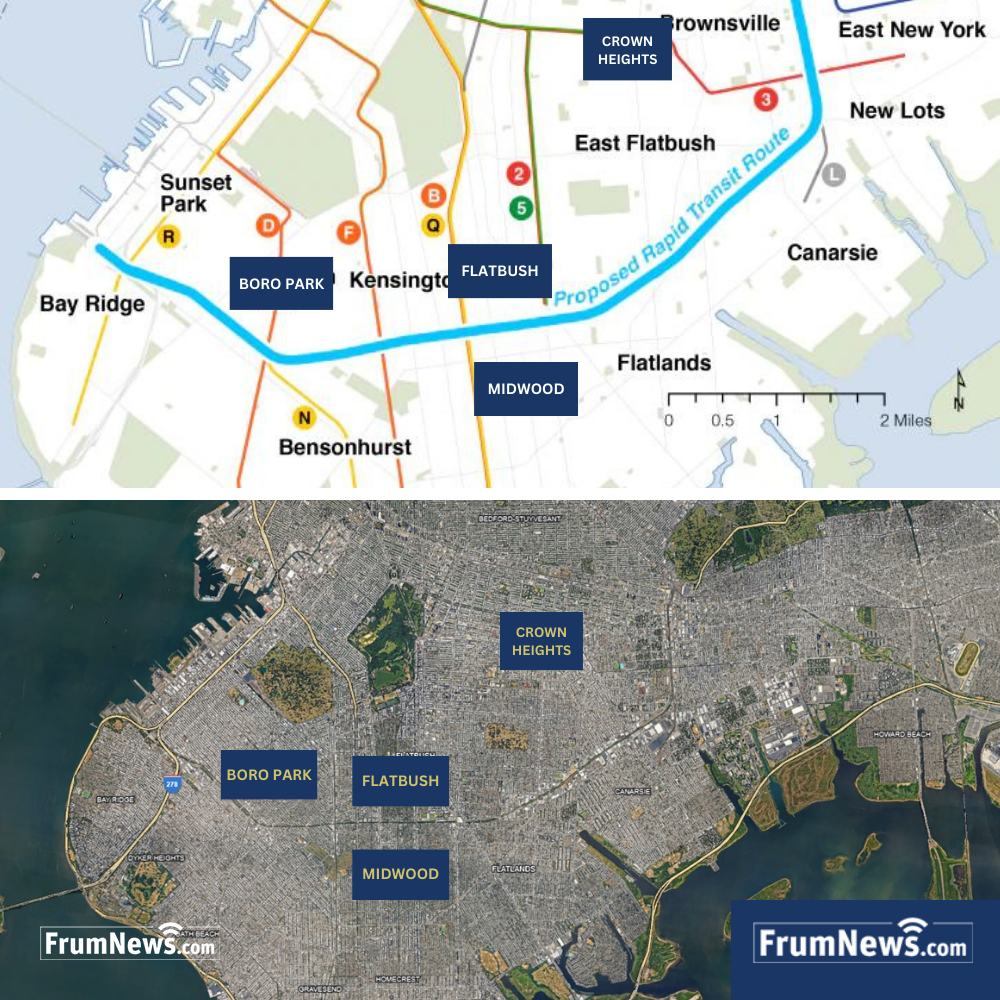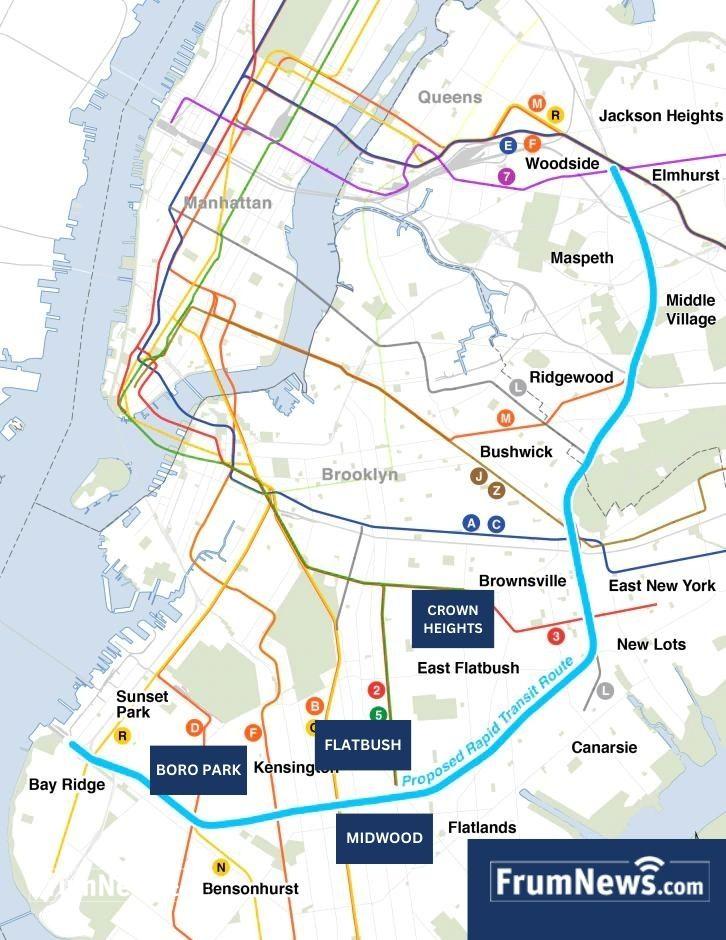Boro Park To Flatbush in 5 Minutes? MTA Plans New Brooklyn/NYC Subway Line

A new light rail line would connect the Jewish communities of Boro Park, Flatbush and Crown Heights in Brooklyn and provide a much-needed connection between Brooklyn and the frum community in Queens
UPDATE 04/22/2025: An important meeting to hear community feedback and input to benefit the neighborhood will be held tonight with top officials from the MTA, as well as representatives of New York City and New York State, the meeting will take place, tonight April 22, at Maimonides Medical Center in Boro Park from 6 to 8 pm.
Boro Park and Flatbush Jewish community leaders are expected to attend this meeting, it is a public meeting and all residents can attend as well.
*****
A new Brooklyn light rail train line connecting the communities of Flatbush, Boro Park and Crown Heights within minutes and provide a much-needed connection between Brooklyn and Queens.
Enter the “Interborough Express,” which would use an existing 14-mile right-of-way now used as a freight line between Bay Ridge in Brooklyn and Jackson Heights in central Queens. It would run alongside the freight line except for a short distance in Middle Village in Queens, where it would run on street level.
The new line would run along 61st Street in Boro Park and Ave H in Flatbush and Midwood. The line would also easily connect with Crown Heights with the 2, 5 and 3 Lines and the Frum communities in central Queens (Kew Gardens Hills, Forest Hills and Kew Gardens).
“Each day I would go to Queens by public transportation, had there been a single ride, it would save up to an hour every day,” a Boro Park resident told FrumNews.com “Even going to Flatbush and Crown Heights is a schlep, this would slash my commute in half.”
Standing at Ave J and Ocean Parkway, it would take an estimated 7 minutes to get to the Shomrei Shabbos Shul by 13th Avenue in Boro Park, and 25 Minutes to reach Kingston Avenue in Crown Heights (with a connection to the 3 line).
The Regional Plan Association originally proposed the line as the “Triboro RX” along this route in 1996 and again pushed it in 2012. The plan gained steam in the past decade, especially during the Covid pandemic as work shifted toward the outer boroughs. (We should note that the original plan would have gone toward the Bronx.) The nearly 150-year-old right-of-way is owned by the Long Island Railroad and partially owned by CSX.
In 2020, the MTA awarded a $1.3 million contract to study the feasibility of restoring passenger service to this section. In 2022, during the NY State of the State, Governor Kathy Hochul said the MTA will move forward with the plan by conducting an environmental study on the IBX. (The governor also directed the Port Authority to complete an environmental review for a cross-freight rail tunnel, which could potentially link with the Bay Ridge Connector freight line.)
In 2023, the MTA announced that the line would be a Light Rail line rather than heavy rail. In 2024, the MTA started engineering for the proposed line.
The MTA expects the plan would cost $5.5 billion and would carry 40 million passengers annually. There is no official timeline for when the line will be complete.
FrumNews.com Context: The Subway system and railroads (MTA, LIRR, Metro North, PATH and NJ Transit) in New York City were primarily built to transport millions of passengers in and out of Manhattan. The system was designed in the early 1900s, just as the five boroughs were unified and the outer boroughs were built with the subway expansion.
Currently, the subway system has limited direct connections between the outer boroughs. The G line connects western Queens and Brooklyn, including the neighborhoods of Long Island City, Greenpoint, Williamsburg, Downtown Brooklyn, Carroll Gardens, Park Slope, and Boro Park. (It is also the only non-shuttle line that does not enter Manhattan.) The A, J, and Z lines also connect the two boroughs, east to west.
The one large frum community and neighborhood that would not be connected to this project due to it’s location would be Williamsburg. However, as mentioned above, the G Subway line already connects Williamsburg to Boro Park and Flatbush.
***
This article has exclusively been brought to you by FrumNews.com – Enjoy our content? Share FrumNews.com with your friends and family
12 Comments
-
04/24/2025 | כ"ו ניסן התשפ"ה
The G ends at Church and McDonald which is as close to Boro park as it gets. The light rail would also connect Boro Park and Flatbush to the LIRR which connects to the five towns or the A which connects to far Rockaway which borders the five towns. All in all it would be a great service for those living in or near Brooklyn or Queens.
-
04/22/2025 | כ"ד ניסן התשפ"ה
DON’T BE BLIND AND DEAF !!!
IF OUR “SMART” LEADER COULDN’T NOT FIXING TRAFFIC ON CONEY ISLAND
, OCEAN PARKWAY AND ETC.THEY CAN DO ONLY TALKING
W/O REAL ACTIONS -
04/22/2025 | כ"ד ניסן התשפ"ה
The environmental studies will nix the plan.
-
04/22/2025 | כ"ד ניסן התשפ"ה
This is very exciting, while most people still need cars to get around anywhere past BP and Flatbush/Midwood, this will definitely reduce traffic and make the streets of the community more nicer and safer for everyone
-
04/22/2025 | כ"ד ניסן התשפ"ה
Looking forward already!!!
-
04/22/2025 | כ"ד ניסן התשפ"ה
Why have I not heard about this yet? It somehow takes years to hear about these great projects that will deeply affect our communities!
-
04/22/2025 | כ"ד ניסן התשפ"ה
What about Williamsburg
-
forum Reply to Williamsburg lives matter 04/22/2025 | כ"ד ניסן התשפ"ה
There’s a G train station at Hewes St. It’s not so far.
-
-
04/22/2025 | כ"ד ניסן התשפ"ה
IF OUR “SMART” politicians CAN’T FIXING TRAFFIC IN BROOKLYN !!!
COUNT HOW LONG TIME WILL TAKE THIS PROGECT ??¿
-
04/22/2025 | כ"ד ניסן התשפ"ה
Excellent idea and long overdue!
-
04/22/2025 | כ"ד ניסן התשפ"ה
What about an easy connection to Monsey?
-
04/22/2025 | כ"ד ניסן התשפ"ה
Governor Hochul’s announcement of support for advancement of the MTA $5.5 Billion Proposed Brooklyn/Queens Light Rail Interborough Express Project has problems.
Hochul, MTA Chairman Janno Lieber and NYC Transit President Richard Davis should listen to the wise words of a colleague. The MTA Office of Capital Construction Deputy Chief of Staff Sean Fitzpatrick said at the past November 8th, 2023 open house public meeting on the proposed MTA $5.5 billion Brooklyn Queens Light Rail Interborough Express Connector “New Yorkers should curb their enthusiasm over a planned train line between Brooklyn and Queens, saying the project may be held up until the agency gets the rest of its system on the right track. The line shouldn’t be built until key fixes are made to the rest of the city’s transit infrastructure. The MTA can’t in good conscience invest in new infrastructure without making sure that we have the funding in place to secure our existing system. It only makes sense to invest in a new line if we’re able to take care of our existing infrastructure for our existing subways, railroads and buses. It would be years before ground breaks on the IBX, adding that the MTA will begin a federal review process (National Environmental Policy Act (NEPA) on the project this winter, which could take up to two years to complete. Construction could begin in five years.”
The proposed route of the Brooklyn – Queens Interborough Express Connector runs from Jackson Heights, Queens and terminates in Bay Ridge, Brooklyn will traverse numerous neighborhoods impacting several hundred thousand people living nearby. There are serious legal and operational issues to be resolved with the Federal Rail Road Administration. They have regulatory jurisdiction over significant portions of the proposed route which would run adjacent to existing active freight tracks. Light rail and freight trains have to coexist on the same narrow corridor.
Project costs will include a series new subway stations with elevators and escalators. This is necessary to provide transfer capacity with 15 subway and 2 LIRR stations that intersect along the route. Each connecting subway or commuter rail station could easily cost anywhere from $100 to $200 million. (Imagine the costs of escalators and elevators to be in compliance with ADA). Add to that — new track, communications and signal systems, power, power substations and a hundred or more new light rail cars ($2 million per car). This additional fleet would require construction of a new maintenance, operations and storage yard for several hundred million dollars. What community would be willing to host such a facility?
There are also costs for reconstructing forty five bridges, widening miles of embankment and viaduct to make space for additional tracks, renovating the 150-year-old East New York tunnel to meet operational and safety requirements, relocating portions of the Buckeye pipeline. There is also a potential serious conflict at the Bay Ridge, Brooklyn terminus. This is also a site for a connection to the proposed $10 billion Cross Harbor Freight Tunnel project.
The most obvious source of funding from Washington would be requesting and being granted permission from the Federal Transit Administration (FTA) to enter its Capital Investment Grant (CIG) New Starts Core Capacity national competitive discretionary grant program. The project was not included in the latest FTA CIG report submitted to Congress in March 2024 for federal fiscal year 2025. Hochul last year asked the MTA to enter this project into the FTA CIG program process. For a project of this size and cost, it can average five years before MTA would complete this process from start to finish. Upon completion, FTA would offer the MTA a CIG Full Funding Grant Agreement (FFGA) which provides actual federal funding This process was used to fund both the MTA $11.6 billion Long Island Rail Road East Side Access to Grand Central Madison. NYC Transit $4.5 billion Second Avenue Subway Phase 1 and most recently, NYC Transit $7.7 billion Second Avenue Subway Phase 2. Three critical requirements under CIG FFGA are that (1) MTA has a dedicated local share to match the federal share under the FFGA, (2) legally has to cover any cost overruns as the FFGA caps the total federal share of costs and (3) there is sufficient local funding upon project completion to maintain and operate the new transit system capital investment and service. How will the MTA comply with this with the looming multi billion multi year ongoing financial deficit, growing long term debt currently at $48 billion, $600 million in annual fare evasion, $1.4 billion in employee overtime along with growing employee medical, salary and pension costs in future years? The project would be competing against the MTA’s $7.5 billion Second Avenue Subway 125th Street Crosstown Phase 3 extension for the same funding source.
Anticipated daily riders upon opening of service between 74,000 to 88,000 is based upon transportation ridership forecasting modeling will have to be periodically updated. The same holds true for anticipated 115,000 daily riders in 2045. These numbers may be overly optimistic. The service plan calls for five minute headway between trains at rush hour and ten minute headway off peak. There is no available information concerning operating costs to subsidize this level of service. How will the MTA find these additional funds within their operating budget upon start of service?.
Completion of the planning feasibility study for this project was just the first of many steps. Based upon past history for other MTA mega projects, even if the funding is eventually found, don’t be surprised if it requires another fifteen to twenty years before opening day of service. Most of the five million pre COVID-19 riders would prefer clean, safe, reliable service at a reasonable price before any system expansion projects such as the $5.5 billion Brooklyn Queens Light Rail Connector and others..
(Larry Penner — transportation advocate, historian and writer who previously served as a former Director for the Federal Transit Administration Region 2 New York Office of Operations and Program Management.
Post your comments:
Read Next trending_flat
 Opinion
Opinion
Op-Ed: I Ate In a Kosher Restaurant, But Is It a 'Jewish' Establishment?
 News
News




Post your comments: